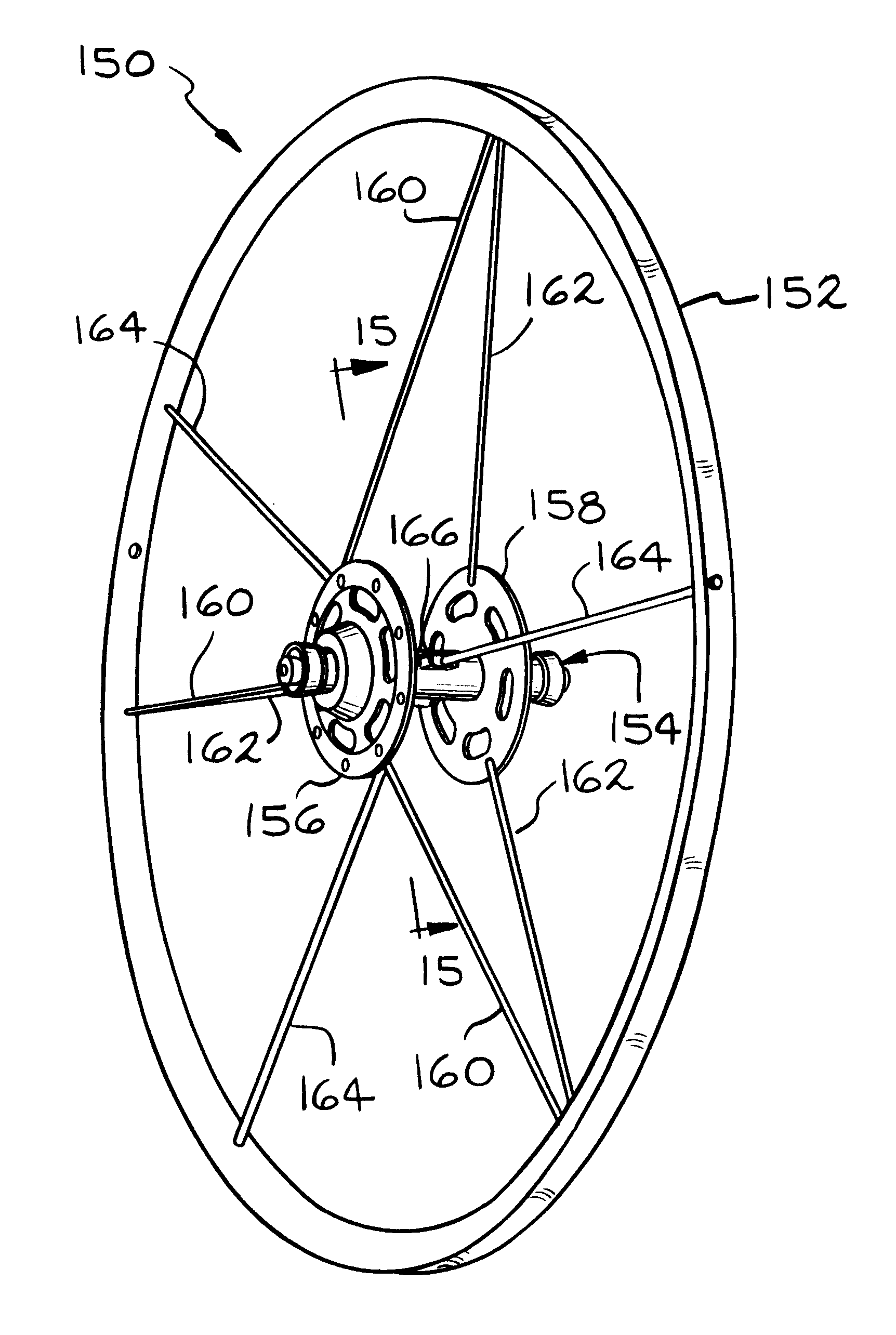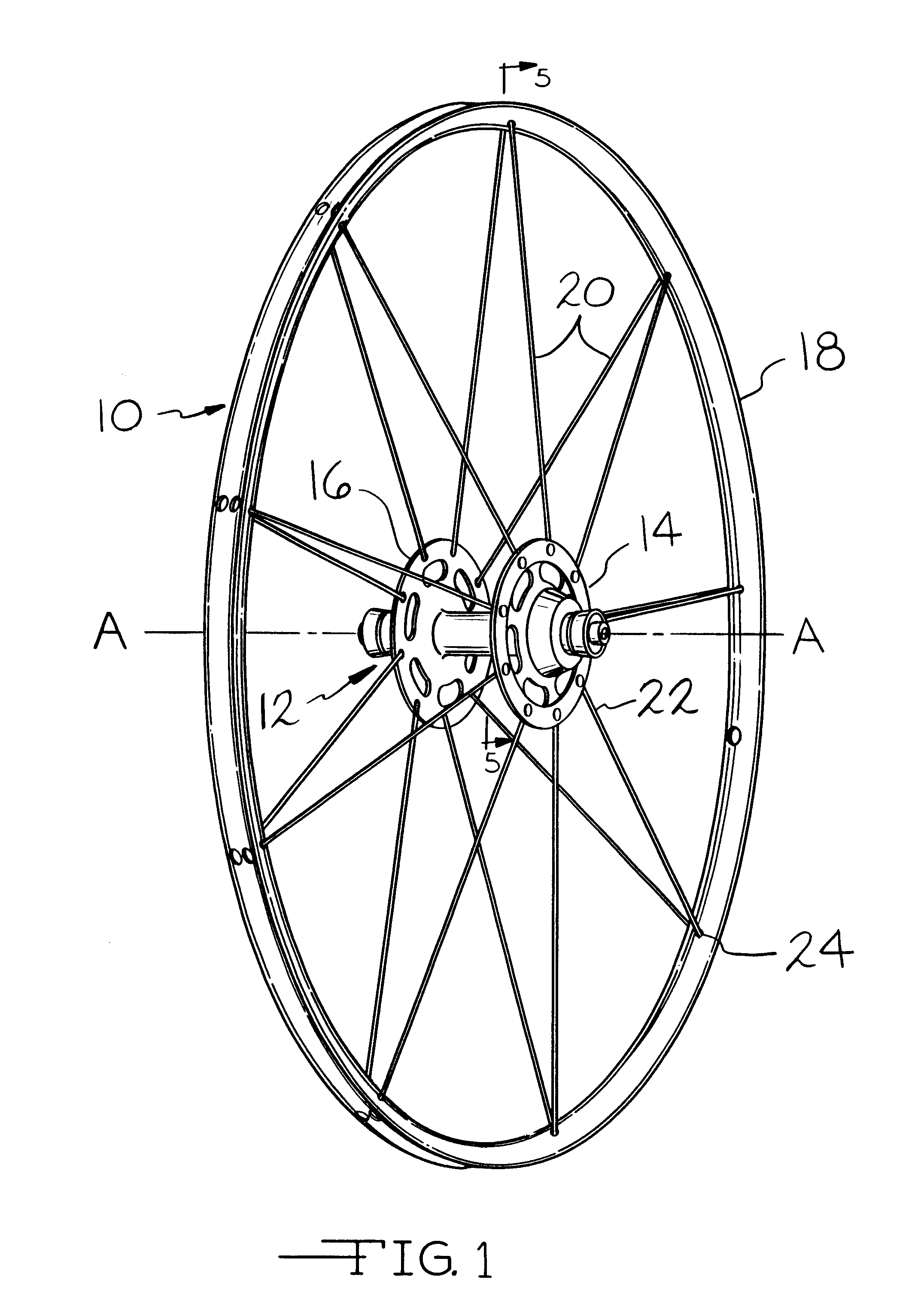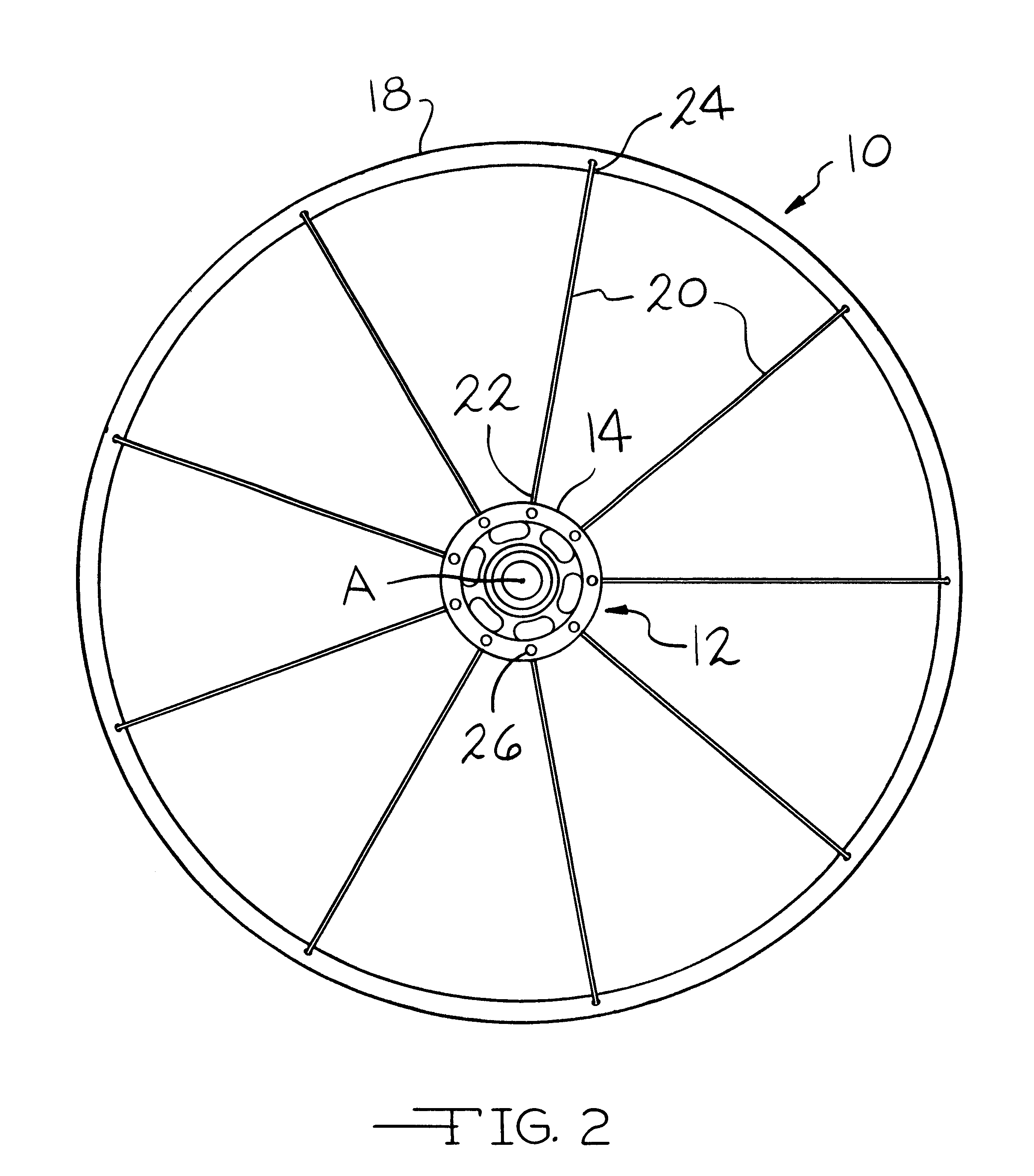Cycle and tensioned spoked wheel assembly
a spoked wheel and spoked wheel technology, applied in the direction of spoked wheels, vehicle components, rims, etc., can solve the problems of affecting the safety of cyclists, so as to achieve the effect of ensuring safety and safety, not only for cyclists, but for other ride-race participants
- Summary
- Abstract
- Description
- Claims
- Application Information
AI Technical Summary
Benefits of technology
Problems solved by technology
Method used
Image
Examples
Embodiment Construction
including the following description of the preferred embodiment, which is illustrated by the various drawing figures.
FIG. 1 is a perspective view of an 18 spoke, radially spoked wheel showing the paired spoking feature of the present invention.
FIG. 2 is a side view of the wheel shown in FIG. 1.
FIG. 3 is a perspective view of a 36 spoke, three cross, tangentially spoked wheel.
FIG. 4 is a side view of the wheel shown in FIG. 3.
FIG. 5 is a cross section, taken along the line 5--5, of the wheel shown in FIG. 1
FIG. 6 is cross sectional view, similar to FIG. 5 but showing a spoke configuration wherein each spoke crosses the center plane of the wheel between the hub and the rim, according to one embodiment of the invention.
FIG. 7 is a perspective view of a prior art, conventionally laced, radially spoked, 14 spoke wheel.
FIG. 8 is a perspective view of a prior art, conventionally laced, tangentially spoked, thirty-six spoke wheel.
FIG. 9 is a side view of the wheel shown in FIG. 8.
FIG. 10 is...
PUM
 Login to View More
Login to View More Abstract
Description
Claims
Application Information
 Login to View More
Login to View More - R&D
- Intellectual Property
- Life Sciences
- Materials
- Tech Scout
- Unparalleled Data Quality
- Higher Quality Content
- 60% Fewer Hallucinations
Browse by: Latest US Patents, China's latest patents, Technical Efficacy Thesaurus, Application Domain, Technology Topic, Popular Technical Reports.
© 2025 PatSnap. All rights reserved.Legal|Privacy policy|Modern Slavery Act Transparency Statement|Sitemap|About US| Contact US: help@patsnap.com



